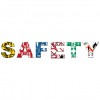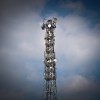| Part 1: |
“Common technical requirements”; |
| Part 2: |
“Specific conditions for radio paging equipment”; |
| Part 3: |
“Specific conditions for Short-Range Devices (SRD) operating on frequencies between 9 kHz and 246 GHz”; |
| Part 4: |
“Specific conditions for fixed radio links and ancillary equipment”; |
| Part 5: |
“Specific conditions for Private land Mobile Radio (PMR) and Terrestrial Trunked Radio (TETRA) equipment and ancillary equipment (speech and non-speech)”; |
| Part 6: |
“Specific conditions for Digital Enhanced Cordless Telecommunications (DECT) equipment”; |
| Part 7: |
“Specific conditions for mobile and portable radio and ancillary equipment of digital cellular radio telecommunications systems (GSM and DCS)”; |
| Part 8: |
“Specific conditions for GSM base stations”; |
| Part 9: |
“Specific conditions for wireless microphones, similar Radio Frequency (RF) audio link equipment, cordless audio and in-ear monitoring devices”; |
| Part 10: |
“Specific conditions for First (CT1 and CT1+) and Second Generation Cordless Telephone (CT2) equipment”; |
| Part 11: |
“Specific conditions for terrestrial sound broadcasting service transmitters”; |
| Part 12: |
“Specific conditions for Very Small Aperture Terminal, Satellite Interactive Earth Stations operated in the frequency ranges between 4 GHz and 30 GHz in the Fixed Satellite Service (FSS)”; |
| Part 13: |
“Specific conditions for Citizens’ Band (CB) radio and ancillary equipment (speech and non-speech)”; |
| Part 14: |
“Specific conditions for analogue and digital terrestrial TV broadcasting service transmitters”; |
| Part 15: |
“Specific conditions for commercially available amateur radio equipment”; |
| Part 16: |
“Specific conditions for analogue cellular radio communications equipment, mobile and portable”; |
| Part 17: |
“Specific conditions for Broadband Data Transmission Systems”; |
| Part 18: |
“Specific conditions for Terrestrial Trunked Radio (TETRA) equipment”; |
| Part 19: |
“Specific conditions for Receive Only Mobile Earth Stations (ROMES) operating in the 1,5 GHz band providing data communications”; |
| Part 20: |
“Specific conditions for Mobile Earth Stations (MES) used in the Mobile Satellite Services (MSS)”; |
|
|
| Part 22: |
“Specific conditions for ground based VHF aeronautical mobile and fixed radio equipment”; |
| Part 23: |
“Specific conditions for IMT-2000 CDMA, Direct Spread (UTRA and E-UTRA) Base Station (BS) radio, repeater and ancillary equipment”; |
| Part 24: |
“Specific conditions for IMT-2000 CDMA Direct Spread (UTRA and E-UTRA) for Mobile and portable (UE) radio and ancillary equipment”; |
| Part 25: |
“Specific conditions for CDMA 1x spread spectrum Mobile Stations and ancillary equipment”; |
| Part 26: |
“Specific conditions for CDMA 1x spread spectrum Base Stations, repeaters and ancillary equipment”; |
| Part 27: |
“Specific conditions for Ultra Low Power Active Medical Implants (ULP-AMI) and related peripheral devices (ULP-AMI-P)”; |
| Part 28: |
“Specific conditions for wireless digital video links”; |
| Part 29: |
“Specific conditions for Medical Data Service Devices (MEDS) operating in the 401 MHz to 402 MHz and 405 MHz to 406 MHz bands”; |
|
|
| Part 31: |
“Specific conditions for equipment in the 9 kHz to 315 kHz band for Ultra Low Power Active Medical Implants (ULP-AMI) and related peripheral devices (ULP-AMI-P)”; |
| Part 32: |
“Specific conditions for Ground and Wall Probing Radar applications”; |
| Part 33: |
“Specific conditions for Ultra Wide Band (UWB) devices”; |
| Part 34: |
“Specific conditions for External Power Supply (EPS) for mobile phones”; |
| Part 35: |
“Specific requirements for Low Power Active Medical Implants (LP-AMI) operating in the 2 483,5 MHz to 2 500 MHz bands”; |
|
|
| Part 50: |
“Specific conditions for Cellular Communication Base Station (BS), repeater and ancillary equipment”; |
| Part 51: |
“Specific conditions for Automotive and Surveillance Radar Devices using 24,05 GHz to 24,5 GHz or 76 GHz to 81 GHz”; |
| Part 52: |
“Specific conditions for mobile and portable (UE) radio and ancillary equipment of digital cellular radio telecommunications systems (GSM and DCS), IMT-2000 CDMA Direct Spread (UTRA and E-UTRA) and CDMA 1x spread spectrum”. |








